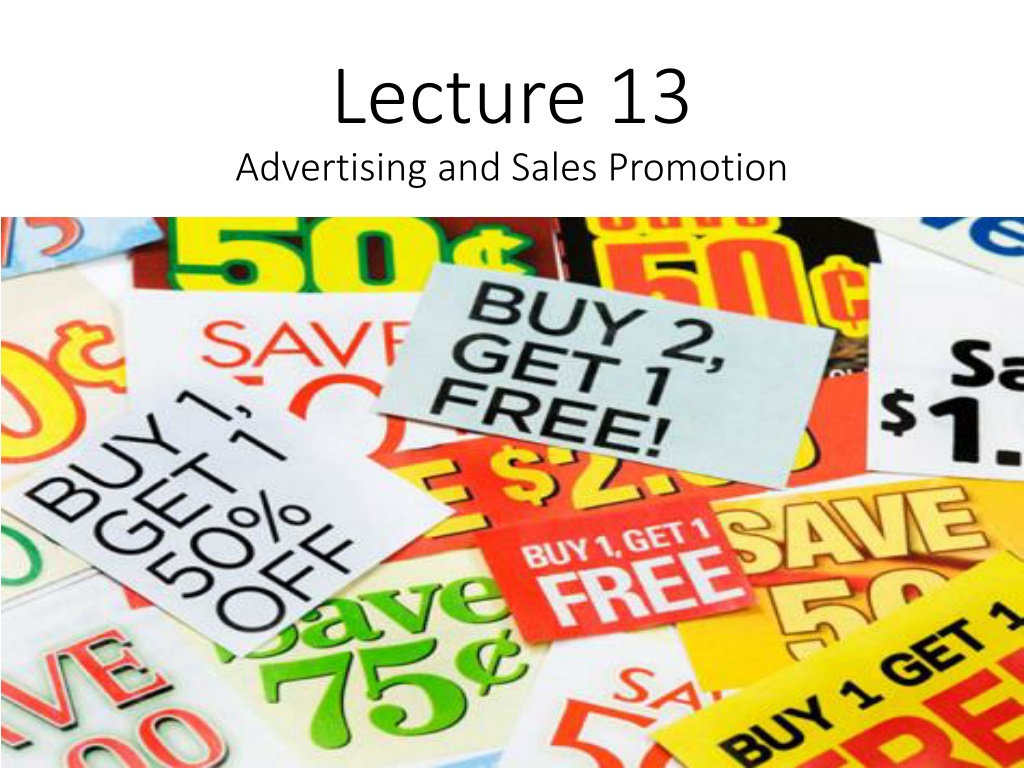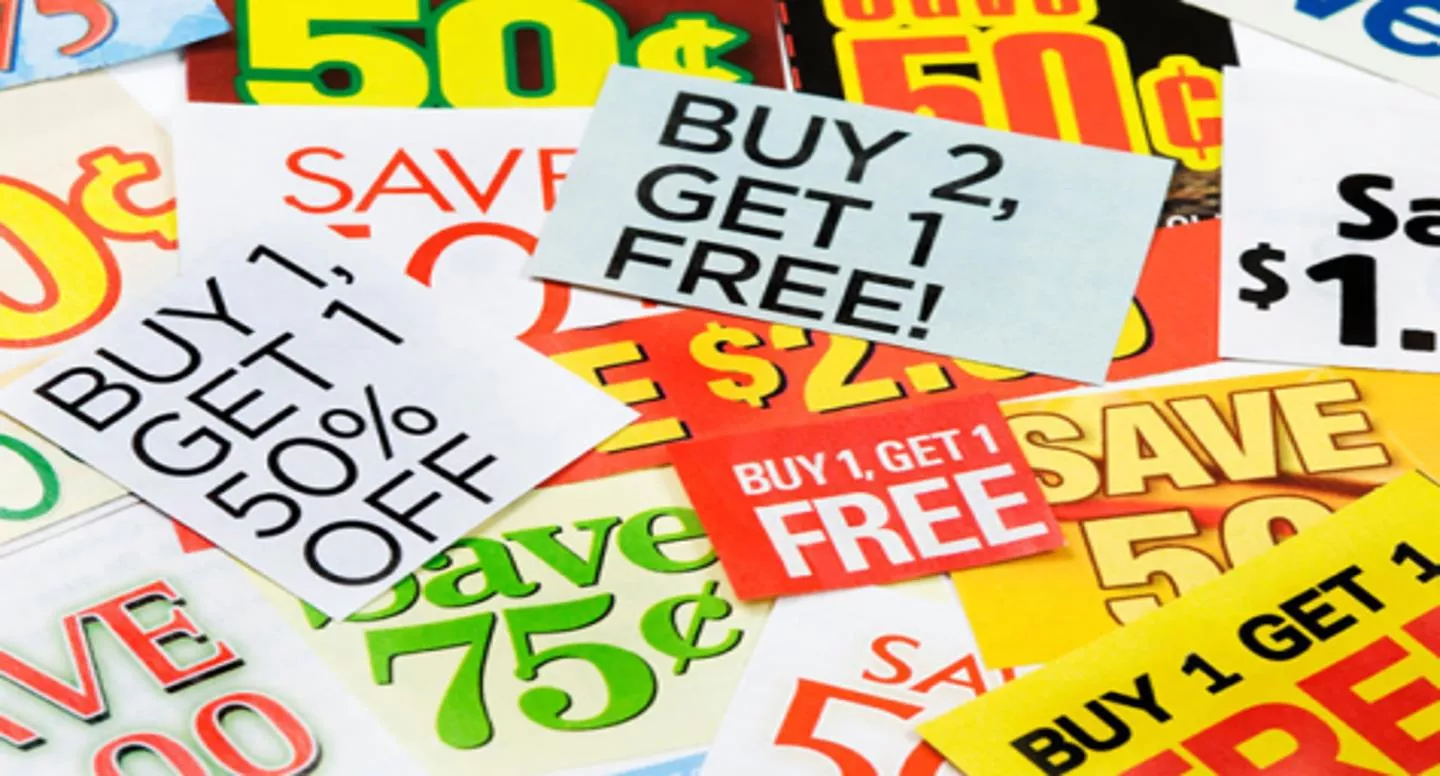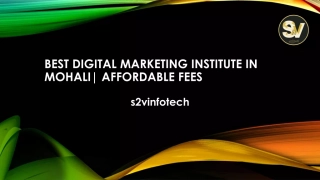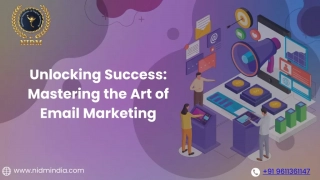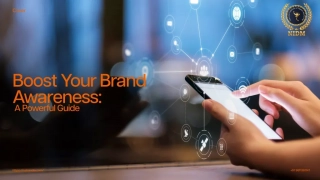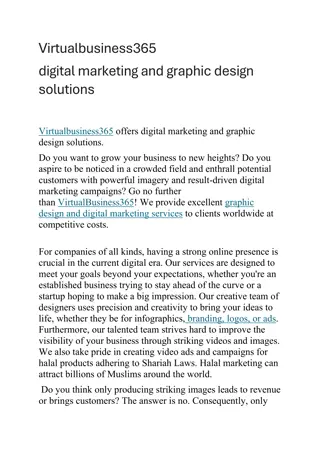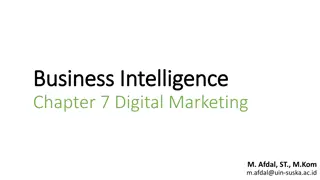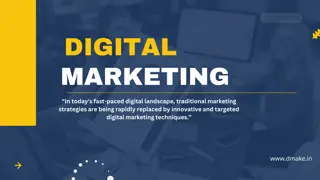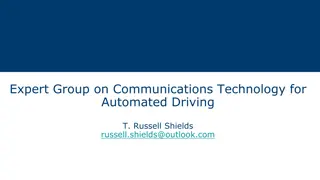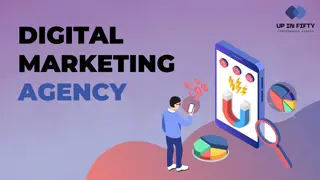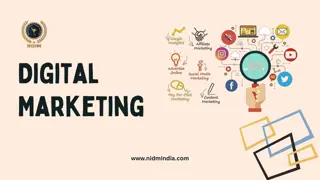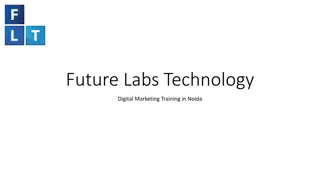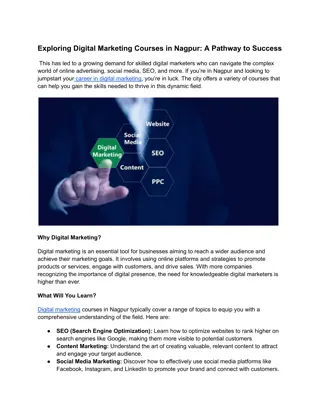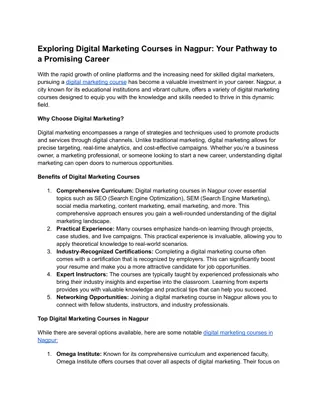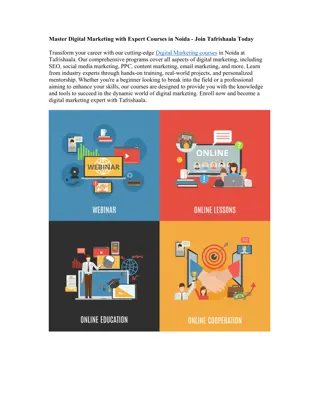Integrated Marketing Communications in a Digital World
Explore the world of advertising and sales promotion through various communication models, including the importance of Integrated Marketing Communications (IMC) for consistent messaging. Learn about the process from source encoding to receiver decoding, and the role of mediums in reaching target audiences effectively.
Download Presentation

Please find below an Image/Link to download the presentation.
The content on the website is provided AS IS for your information and personal use only. It may not be sold, licensed, or shared on other websites without obtaining consent from the author.If you encounter any issues during the download, it is possible that the publisher has removed the file from their server.
You are allowed to download the files provided on this website for personal or commercial use, subject to the condition that they are used lawfully. All files are the property of their respective owners.
The content on the website is provided AS IS for your information and personal use only. It may not be sold, licensed, or shared on other websites without obtaining consent from the author.
E N D
Presentation Transcript
Lecture 13 Advertising and Sales Promotion
Communication Models in a Digital World That is Always On Marketing messages can assume many forms with a variety of objectives. From quirky TV commercials and viral videos to blimps with blinking messages Savvy marketers know each element of the marketing mix is a form of communication! All marketing communications aim to either inform, remind, persuade, or build relationships.
Integrated Marketing Communications (IMC) Integrated marketing communication (IMC) involves the planning, execution, and evaluation of coordinated, brand communication programs over time to targeted audiences. Aim is to deliver consistent messaging across platforms. Must use a multichannel promotion strategy which combines traditional marketing communication with social media and other online activities.
The Source Encodes Process begins with a source with an idea that they want to communicate to a receiver. Encoding is the process by which the idea is translated into a physically perceivable form that conveys meaning. Words, music, and images Spokespeople Animated characters
The Message The message is the actual content of communication that goes from the source to a receiver. May be in the form of: Advertising Sales promotion A salesperson s pitch Infomercial Websites, social media, blogs, search engines Word of mouth
The Medium The medium is the communication vehicle that reaches members of the target audience. Marketers face two major challenges : Target market exposure to medium Product characteristics are not in conflict with the medium.
The Receiver Decodes For effective decoding to occur, the source and the receiver must share a frame of reference. In this ad, the receiver needs to understand the meaning of the white flag in order for the message to make sense.
Noise and Feedback The communication model also acknowledges that noise anything that interferes with effective communication can block messages. To complete the communication loop, the source gets feedback from receivers.
The Traditional Promotional Mix Promotion mix refers to communication elements that the marketer controls. Mass (one-to-many) communication: includes advertising, sales promotion, and public relations. Personal (one-to-one) communication: includes personal selling and direct marketing.
Mass Communications: The One-to-Many Model Some elements of the promotion mix include messages intended to reach many prospective customers at the same time. Advertising Consumer sales promotion Public relations
Personal Communications: The One-to-One Model Marketers may sometimes prefer to communicate on a personal level. Personal selling Direct mail Telemarketing Direct marketing
Advertising Advertising is non-personal communication from an identified sponsor using mass media. Practice dates to ancient Greece and Rome. Changes in media landscape have slowed growth of traditional advertising But mass communications remains the best way to reach a large audience TV Everywhere (also known as Authenticated Streaming) is the use of an internet-enabled device, like a tablet or smartphone, to stream content from a cable or satellite provider.
User-Generated Advertising Content User-Generated Content (UGC) includes the millions of product-related comments, reviews, photos, images, and videos posted online by consumers. Some marketers encourage consumers to contribute their own DIY ads (e.g., Dorito s Crash the Super Bowl contest). Crowdsourcing can help select a winning ad or even create one (Ford s Fiesta Movement campaign).
Ethical Issues in Advertising Advertising, more than any other aspect of marketing, has been criticized as unethical. Advertising is manipulative, is deceptive and untruthful, is offensive and in bad taste, and causes people to buy things they don t really need. Corrective advertising clarifies or qualifies previous deceptive advertising claims. Puffery relates to claims made in advertising of product superiority that cannot be proven true or untrue. Greenwashing is a practice in which companies promote their products as environmentally friendly when in truth the brand provides little ecological benefit.
Create the Ads Creative Strategy is the process that turns a concept into an advertisement A Creative Brief is a guideline or blueprint for the marketing communication program that guides the creative process
Advertising Appeals Informational Appeals satisfies consumers practical need for information Emotional Appeals try to influence emotions A Unique Selling Proposition focuses on clear reason why a product is superior Reminder Advertising keeps the name of a brand in people s minds Teaser or Mystery Ads generate curiosity
Advertising Execution Format Execution format describes the basic structure of the message. Common formats include: Comparison Demonstration Brand Storytelling Testimonial Slice of Life Lifestyle
Tonality Tonality refers to the mood or attitude the message conveys: Straightforward Humor Dramatic Romantic/Sexy Fear appeal ads
Pretest What the Ads Will Say Advertisers try to minimize mistakes by getting reactions to ad messages before they actually place them Data from pretesting research may come from either quantitative (e.g., surveys) or qualitative (e.g., focus groups) sources
Where to Say It: Traditional Mass Media TV is often the medium of choice, but is expensive Radio is flexible but is declining in use Newspapers are excellent for local ads Magazines are varied in scope and can target local markets with selective binding
Where to Say It: Branded Entertainment Advergaming is brand placements in video games Native advertising is an execution strategy that mimics the content of the website where the message appears
Where to Say It: Support Media Directory advertising is information-focused advertising such as the Yellow Pages Out-of-home media reaches people in public places Place-based media transmits messages in public places where certain people congregate (airports, doctors offices, etc.)
Where to Say It: Digital Media Owned media may include websites, blogs, Facebook, and Twitter accounts. Controlled by company, effective for relationship building Paid media includes display ads, sponsorships, and paid key word searches. Most similar to traditional advertising, less trusted by consumers Earned media refers to word of mouth or buzz on social media. Most credible to consumers, no company control
Ethical/Sustainable Decisions in the Real World The Internet is an open source revolution. Ad fraud and ad blocking are rampant. These cost advertisers $8 to $18 billion a year. Is it ethical for ad networks to block ads intended for consumers devices?
When and How Often to Say It A media schedule is a plan that specifies exact media to use and when to use it. Reach is the percentage of the target market that will be exposed to the media vehicle. Frequency is the average number of times a person in the target group will be exposed to a message. Gross rating points compare effectiveness of different media vehicles. Cost per thousand is the cost to deliver a message to 1,000 people or homes.
Media Scheduling A continuous schedule maintains a steady stream of advertising throughout the year. A pulsing schedule varies the amount of advertising throughout the year based upon when the product is likely to be in demand. Flighting is an intense form of pulsing, in which advertising appears in short bursts with periods of little or no activity.
Sales Promotion Sales promotions are programs designed to build interest in or encourage purchase of a good or service during a specified period. How does sales promotion compare to advertising? Both are paid promotional activities with identifiable sponsors Differ in that sales promotions typically have a more immediate short-term objective.
Sales Promotion Designed to Increase Industry Visibility Other types of trade sales promotions increase the visibility of a manufacturer s products to industry channel partners. Trade shows Promotional products Point-of-purchase displays Incentive programs
